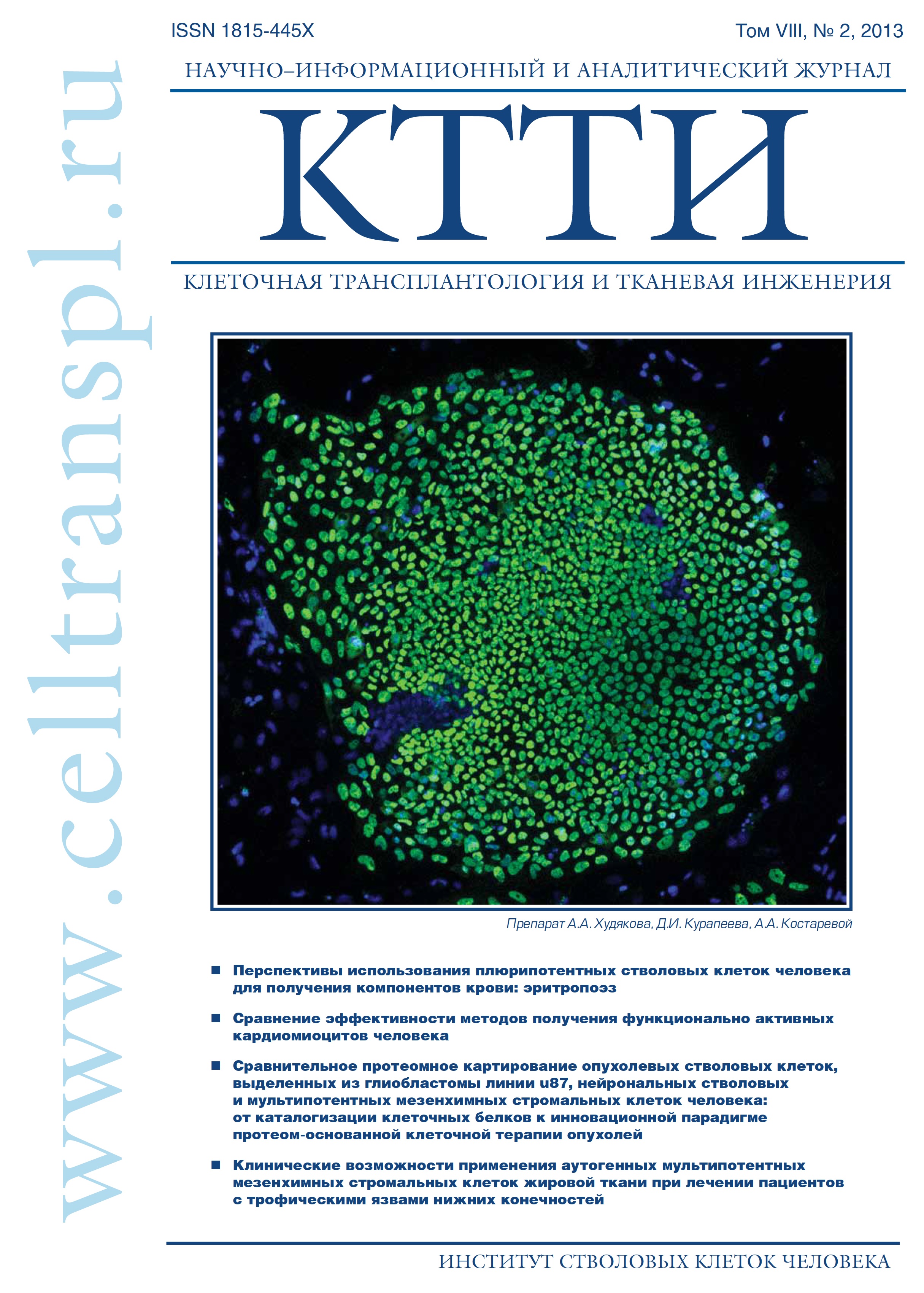Experience of Samara hematopoetic cells donor registry
- Authors: Tyumina O.V1, Klyuchnikov D.Y1, Volchkov S.E1, Trusova L.M1
-
Affiliations:
- Clinical Centre of Cell Technologies, Samara
- Issue: Vol 8, No 2 (2013)
- Pages: 75-78
- Section: Articles
- URL: https://genescells.ru/2313-1829/article/view/121619
- DOI: https://doi.org/10.23868/gc121619
- ID: 121619
Cite item
Abstract
Transplantation of allogenic hematopoietic stem cells used for treatment of oncological and immune diseases during the late 1970s. Despite of that the matched donor search is the main problem in this field as before. To resolve this problem the bone marrow donor registries were established around the world. In 2010 Bone marrow donor registry (BMDR) was established in Clinical Centre of Cell Technologies. BMDR includes adult donors from many regions of Russia and cord blood units (CBUs) from Samara cord blood bank. At the present day, there are more than 5000 CBUs and 5000 donors. During the work of the registry 44 CBUs were handed to Russian and international transplant centers. In according with received results, the survival rate was about 65%. In relation with increase of oncohematological diseases in Russia the development of national bone marrow donor registry is extremely important.
Full Text
About the authors
O. V Tyumina
Clinical Centre of Cell Technologies, Samara
D. Y Klyuchnikov
Clinical Centre of Cell Technologies, Samara
S. E Volchkov
Clinical Centre of Cell Technologies, Samara
L. M Trusova
Clinical Centre of Cell Technologies, Samara
References
- Gluckman E., Broxmeyer H.A., Auerbach A.D. et al. Hematopoietic reconstitution in a patient with Fanconi's anemia by means of umbilical-cord blood from an HLA-identical sibling. New Eng. J. Med. 1989; 321(17): 1174-78.
- Donnal T.E. Bone Marrow Transplantation — past, present and future. Nobel Lecture 1990.
- http://bmdw.org/fileadmin/Press_Releases/Press_release_final.pdf
- http://www.worldmarrow.org/fileadmin/Committees/STDC/20120101-STDC-wMDA_Standards.pdf
- http://hla.alleles.org/nomenclature/stats.html
- http://www.perepis-2010.ru/results_of_the_census/tab5.xls
- Maiers M., Gragert L., Klitz W. High-resolution HLA alleles and haplotypes in the United States population. Hum. Immunol. 2007; 68(9): 779-88.
- Ashfaq K., Yahaya I., Hyde C. et al. Clinical effectiveness and cost-effectiveness of stem cell transplantation in the management of acute leukaemia: a systematic review. Health Technol. Assess 2010; 14(54): 11-30.
- Cornelissen J.J., van Putten W.L., Verdonck L.F. et al. Results of a HOVON/SAKK donor versus no-donor analysis of фопролиферативный синдром (1), первичный семейный гемофагоцитарный лимфогистиоцитоз (1), первичный иммунодефицит (1) синдром Вискотта -Олдридча (1), синдром «голых» лимфоцитов (2); все пациенты высокой группы риска.
- Yanada M., Matsuo K., Suzuki T. et al. Allogeneic hematopoietic stem cell transplantation as part of postremission therapy improves survival for adult patients with high-risk acute lymphoblastic leukemia: a metaanalysis. Cancer 2006; 106(12): 2657-63.
- Goldstone A.H., Richards S.M., Lazarus H.M. et al. In adults with standard-risk acute lymphoblastic leukemia, the greatest benefit is achieved from a matched sibling allogeneic transplantation in first complete remission, and an autologous transplantation is less effective than conventional consolidation/maintenance chemotherapy in all patients: final results of the International ALL Trial. Blood ; 111(4): 1827-33.
- Vey N., Thomas X., Picard C., Kovascovicz T. et al. Allogeneic stem cell transplantation improves the outcome of adults with t (1;19)/E2A-PBX1 and t(4;11)/MLL-AF4 positive B-cell acute lymphoblastic leukemia: results of the prospective multicenter LALA-94 study. Leukemia 2006 ; 20(12): 2155-61.
Supplementary files










